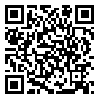BibTeX | RIS | EndNote | Medlars | ProCite | Reference Manager | RefWorks
Send citation to:
URL: http://jdm.tums.ac.ir/article-1-135-en.html
Background and Aim: Extracted teeth used in preclinic should be disinfected. The aim of this study was to evaluate the effects of some disinfectants on microorganisms cultured from pulp chamber of extracted teeth.
Materials and Methods: In this experimental study 54 intact human teeth were collected. After access cavity preparation, 10 8 B. streothermophillus endospors were inoculated into pulp chamber. Then cavities were sealed with a temporary restorative material. Teeth were divided into 5 groups of 10 each. The teeth were then stored in these disinfectants: 5.25% hypochlorite sodium, 5% Microten, 5% Deconex, 2% Glutaraldehyd, and 10% Formalin for 48 hours. Two teeth were autoclaved as negative controls and two were stored in normal saline as positive controls. The teeth were then sectioned in cervical area and cultured in Trypticase Soy Broth. After three days turbidity in tubes was evaluated. Statistical analysis was done by Fisher's exact test.
Results: None of these solutions were able to prevent microorganism growth in all samples however, Formalin was better in six cases than that of other disinfectants. Differences between these five groups were not statistically significant (P=0.384).
Conclusion: Sterilization of the teeth with autoclave is the only absolute method for disinfecting the root canals of extracted teeth and disinfectants are not reliable for this purpose.
Received: 2009/05/5 | Accepted: 2009/09/6 | Published: 2013/10/1
| Rights and Permissions | |
 |
This work is licensed under a Creative Commons Attribution-NonCommercial 4.0 International License. |




